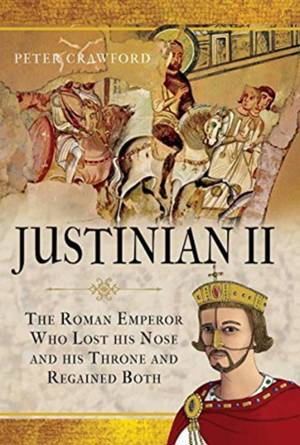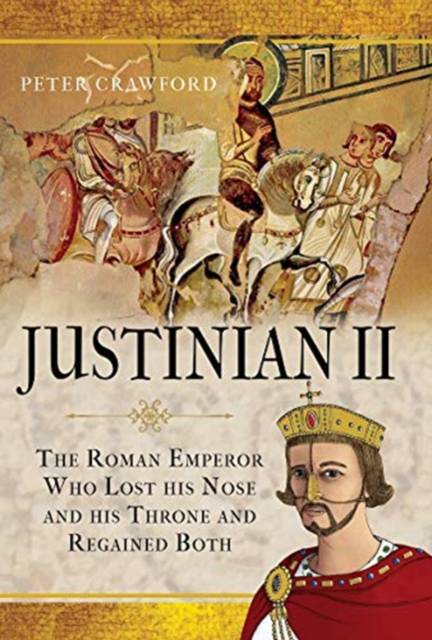
- Afhalen na 1 uur in een winkel met voorraad
- Gratis thuislevering in België vanaf € 30
- Ruim aanbod met 7 miljoen producten
- Afhalen na 1 uur in een winkel met voorraad
- Gratis thuislevering in België vanaf € 30
- Ruim aanbod met 7 miljoen producten
Zoeken
Justinian II
The Roman Emperor Who Lost His Nose and His Throne and Regained Both
Peter Crawford
Hardcover | Engels
€ 41,95
+ 83 punten
Omschrijving
Justinian II became Roman emperor at a time when the Empire was beset by external enemies. His forces gained success against the Arabs and Bulgars but his religious and social policies fuelled internal opposition which resulted in him being deposed and mutilated (his nose was cut off) in 695. After a decade in exile, during which he strangled two would-be assassins with his bare hands, he regained power through a coup d'etat with the backing of the erstwhile Bulgar enemy (an alliance sealed by the marriage of his daughter, Anastasia).
His second reign was seemingly harsher and again beset by both external and internal threats and dissension over doctrinal matters. An energetic and active ruler, his reign saw developments in various areas, including numismatics, administration, finance and architecture, but he was deposed a second time in 711 and beheaded. Drawing on all the available evidence and the most recent research, Peter Crawford makes a long-overdue re-assessment of Justinian's colorful but troubled career and asks if he fully deserves his poor reputation.
His second reign was seemingly harsher and again beset by both external and internal threats and dissension over doctrinal matters. An energetic and active ruler, his reign saw developments in various areas, including numismatics, administration, finance and architecture, but he was deposed a second time in 711 and beheaded. Drawing on all the available evidence and the most recent research, Peter Crawford makes a long-overdue re-assessment of Justinian's colorful but troubled career and asks if he fully deserves his poor reputation.
Specificaties
Betrokkenen
- Auteur(s):
- Uitgeverij:
Inhoud
- Aantal bladzijden:
- 416
- Taal:
- Engels
Eigenschappen
- Productcode (EAN):
- 9781526755308
- Verschijningsdatum:
- 22/10/2021
- Uitvoering:
- Hardcover
- Formaat:
- Genaaid
- Afmetingen:
- 156 mm x 236 mm
- Gewicht:
- 929 g

Alleen bij Standaard Boekhandel
+ 83 punten op je klantenkaart van Standaard Boekhandel
Beoordelingen
We publiceren alleen reviews die voldoen aan de voorwaarden voor reviews. Bekijk onze voorwaarden voor reviews.











